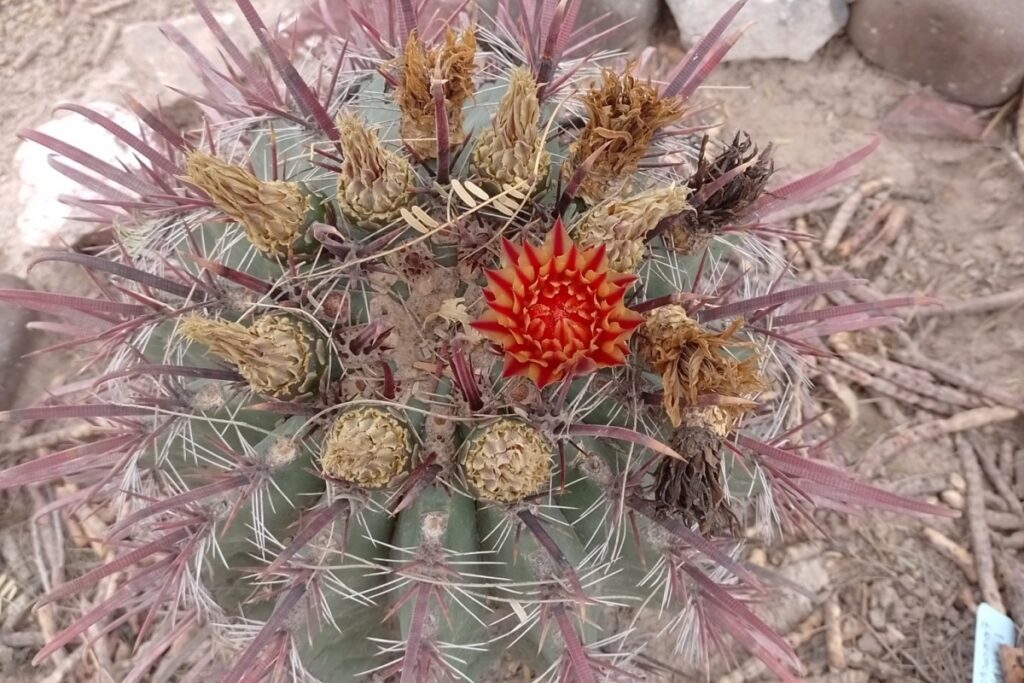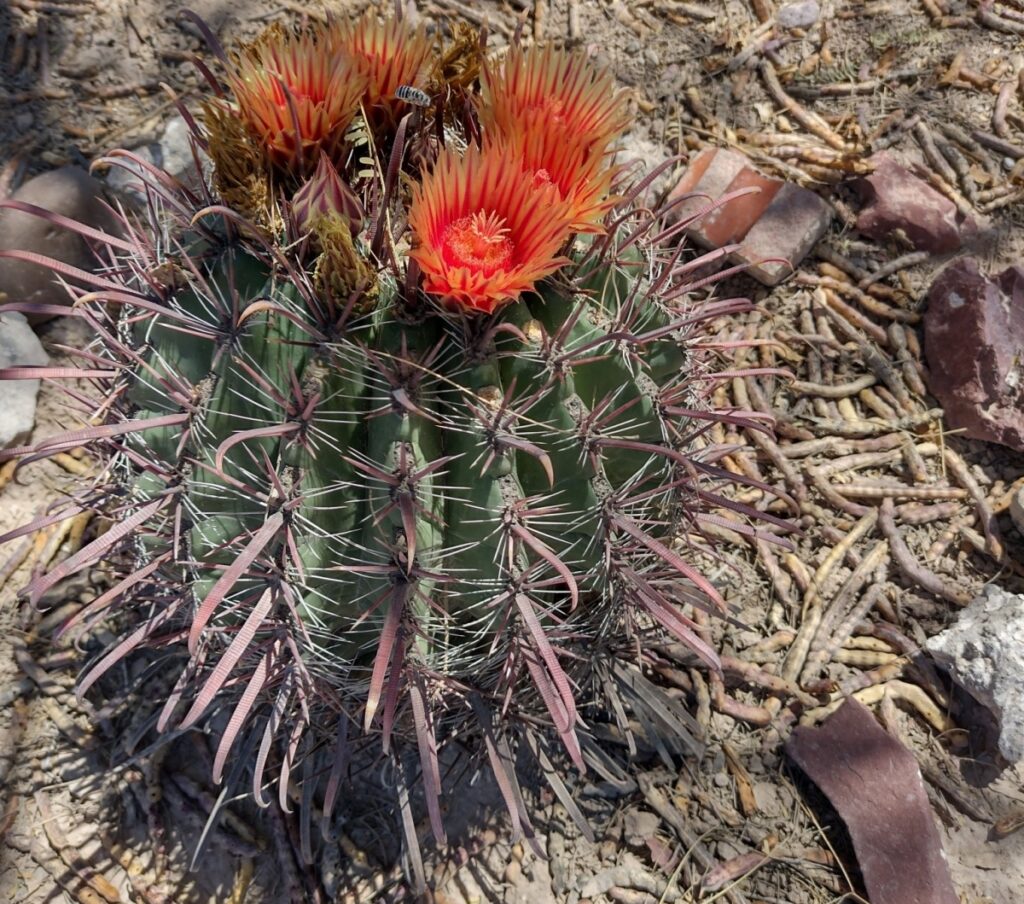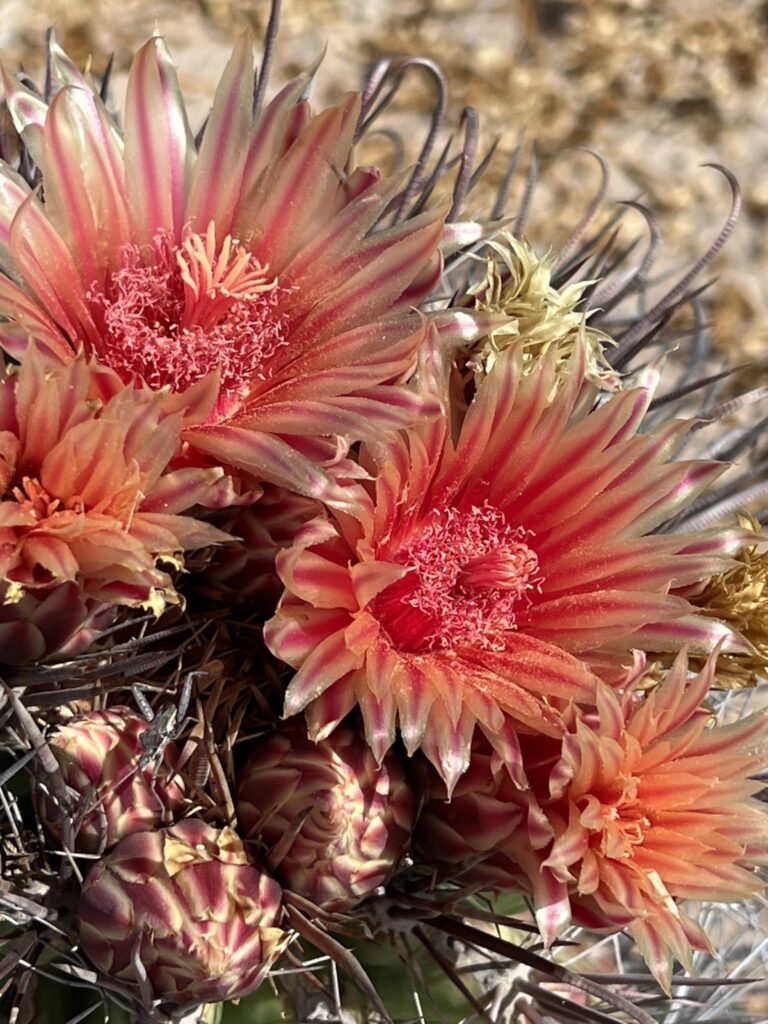You Won’t Believe How Tall This Ferocactus peninsulae Can Grow
While most barrel cacti stay relatively compact, the Ferocactus peninsulae is an exception that really stands out from the crowd. Unlike its shorter cousins, this remarkable Mexican species can attain tremendous heights up to 8 feet tall when mature.
As you set your eyes on the Ferocactus peninsulae, its striking vertical stature and distinctive ribbed cylinder shape immediately command your attention. But the surprises don’t stop there – this unique desert plant also features eye-catching spines, vibrant blooms, and a beautiful bluish-green coloring. If you’re a cactus enthusiast, the Peninsula barrel cactus deserves a spot in your collection.

Contents
About Ferocactus peninsulae
Native to the arid regions of Mexico’s Baja California peninsula, Ferocactus peninsulae is a solitary, unbranched barrel cactus. While it starts life as a spherical seedling, its stem elongates over time into a tall, cylindrical shape that tapers slightly toward the apex.
Mature plants can reach up to 8 feet (2.5 m) in height, though more typical heights are around 2-3 feet (0.6-0.9 m). The ribbed, blue-green stem is adorned with 12-20 prominent ridges lined with areoles bearing rigid spines. Each areole produces 4 thick, reddish, hooked central spines along with 6-13 slender radial spines.
From late spring through early summer, the Peninsula barrel cactus bears broadly funnel-shaped flowers up to 6 inches (15 cm) across. The showy blooms range from red to yellow with striking orange-red midstripe details.
While Ferocactus peninsulae shares some similarities in spine and flower form with its close relative the Fishhook barrel cactus (F. wislizeni), its ability to achieve such tremendous height at maturity really sets this species apart as an eye-catching specimen.
Related Post:
44 Types of Ferocactus Cacti [With Pictures]
How to Care For Ferocactus peninsulae
Light
Ferocactus peninsulae absolutely loves bright sunlight and requires a lot of it to develop its typical spination and coloring. Provide at least 6 hours of direct sun exposure each day, ideally situating the plant outdoors in full, unobstructed sunlight.
If growing indoors, supplement with a high-intensity grow light positioned very close to the cactus on a timer to mimic natural sunlight hours. Too little light will cause the plant to etiolate and potentially rot. However, avoid moving it suddenly from shade to intense sun as this can scorch the plant. Gradually acclimate it to increased light levels.
Water
Ferocactus peninsulae has modest watering needs during its spring-fall growing period. Only water when the soil is completely dry down to the root zone. Then soak the soil thoroughly and allow it to drain completely. In winter, water minimally every 6-8 weeks to keep the plant from shriveling.
Soil

A gritty, well-draining cactus/succulent soil mix is ideal. Make your own by combining 1 part regular potting mix with 1 part coarse sand or perlite. The soil should feel dense and grainy, not light and fluffy.
Fertilizer
A balanced fertilizer (10-10-10 or 13-13-13) can be applied once in spring at 1/4 strength. Too much fertilizer promotes lush, unstable growth.
Temperature and Humidity
As a native of the Mexican deserts, Ferocactus peninsulae thrives in very hot and dry conditions. It requires warm to scorching temperatures, ideally between 70-95°F (21-35°C) during the day. Low humidity below 40% and excellent airflow are also important.
This cactus cannot tolerate prolonged exposure to cold temperatures below 50°F (10°C) or frost. Protect it from cool conditions during winter by providing warmth of at least 60°F (15°C). Replicating its natural desert environment as closely as possible is key to keeping this cactus happy and healthy.
Pests and Problems
Watch for common houseplant pests like mealybugs, scale, and spider mites. Rot and fungal issues can arise from overwatering or poor soil drainage.
Pruning
These solitary cacti don’t require pruning beyond carefully removing dead, damaged, or unsightly growth with sterilized shears.
Potting and Repotting
F. peninsulae has a slow growth rate and infrequent need for repotting – aim to repot every 2-3 years in late spring. Use a container with drainage holes and enough depth to accommodate the tap root.

How to Propagate Ferocactus peninsulae
The only way to propagate more Ferocactus peninsulae is from seed, as this species does not readily propagate from cuttings. When propagating from seed:
- Allow the seeds to ripen fully on the plant until significantly overripe before harvesting
- Clean and dry the harvested seeds thoroughly
- Sow the seeds in a well-draining seed starter mix, providing bright light and warm temperatures around 70°F
- Keep the seeding mix evenly moist but not saturated
- Be patient, as cacti seeds can sometimes take several months to germinate
Seedlings require frequent repotting into slightly larger containers as they dislike dry conditions and intense light when young. Handle them carefully, as they are very delicate initially.
